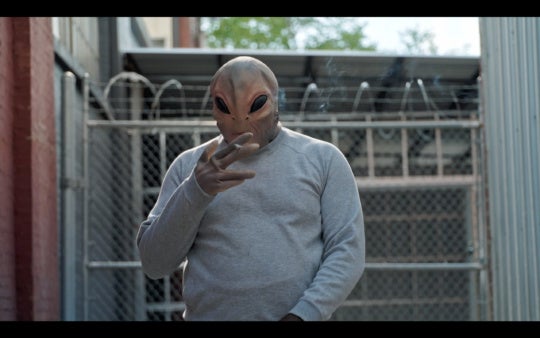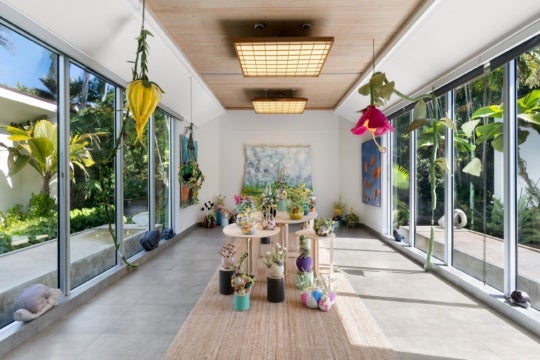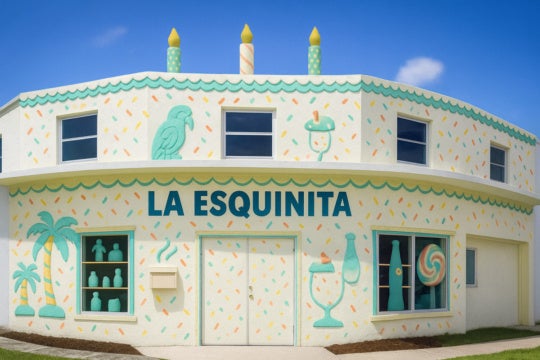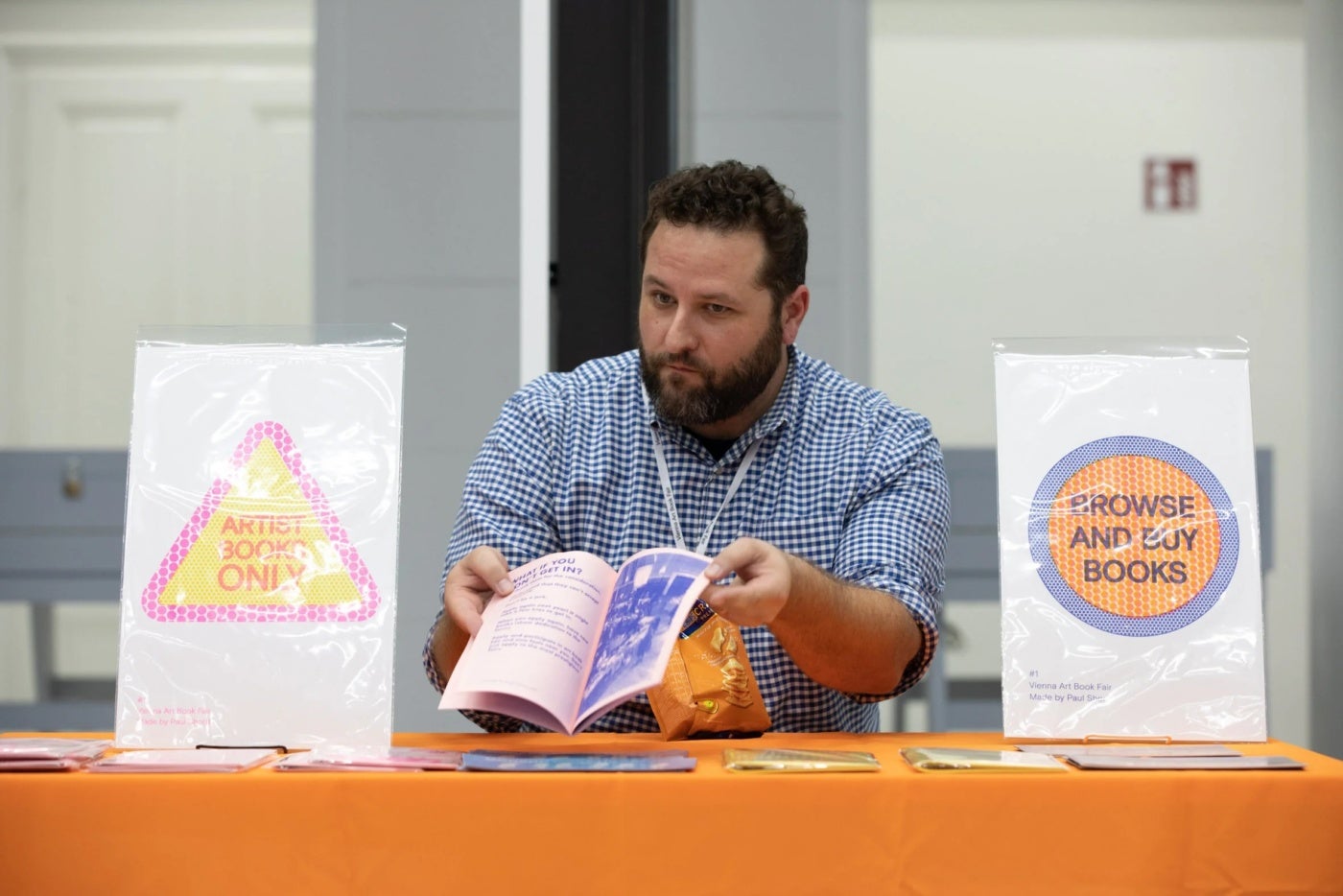
I make books for everyone—or at least books I hope will appeal to everyone. I started making artist books in 2012 to document projects that were internet-based, performative, and collaborative. As my art practice grew, the books became artworks in themselves.
Over the last seven years, I’ve produced a series of Risograph-printed books designed as collections of sign-based prints, each one made to tear out individually. Along the way, I began creating coloring books, laser-cut books, and art guides.
Balancing the books
I only publish my own books. I create, design, order paper, buy ink, print and produce every aspect of them. I own my own printing machines: one refurbished Risograph bought from a supplier and another used one purchased on Facebook Marketplace.
I have a separate bank account for art expenses, so if I don’t sell anything, I can’t make anything. I try to produce two or three new books a year, plus two or three reprints of older books. I stalk websites for the paper I need, trying to catch it on sale or with free shipping.
One metric I use for success is breaking even on a book within a year, but money isn’t the only factor. Did the book lead to friendships, wholesale orders, or distribution? Did it advance my art practice or skill set in a new way? And most importantly, did the book find an audience?
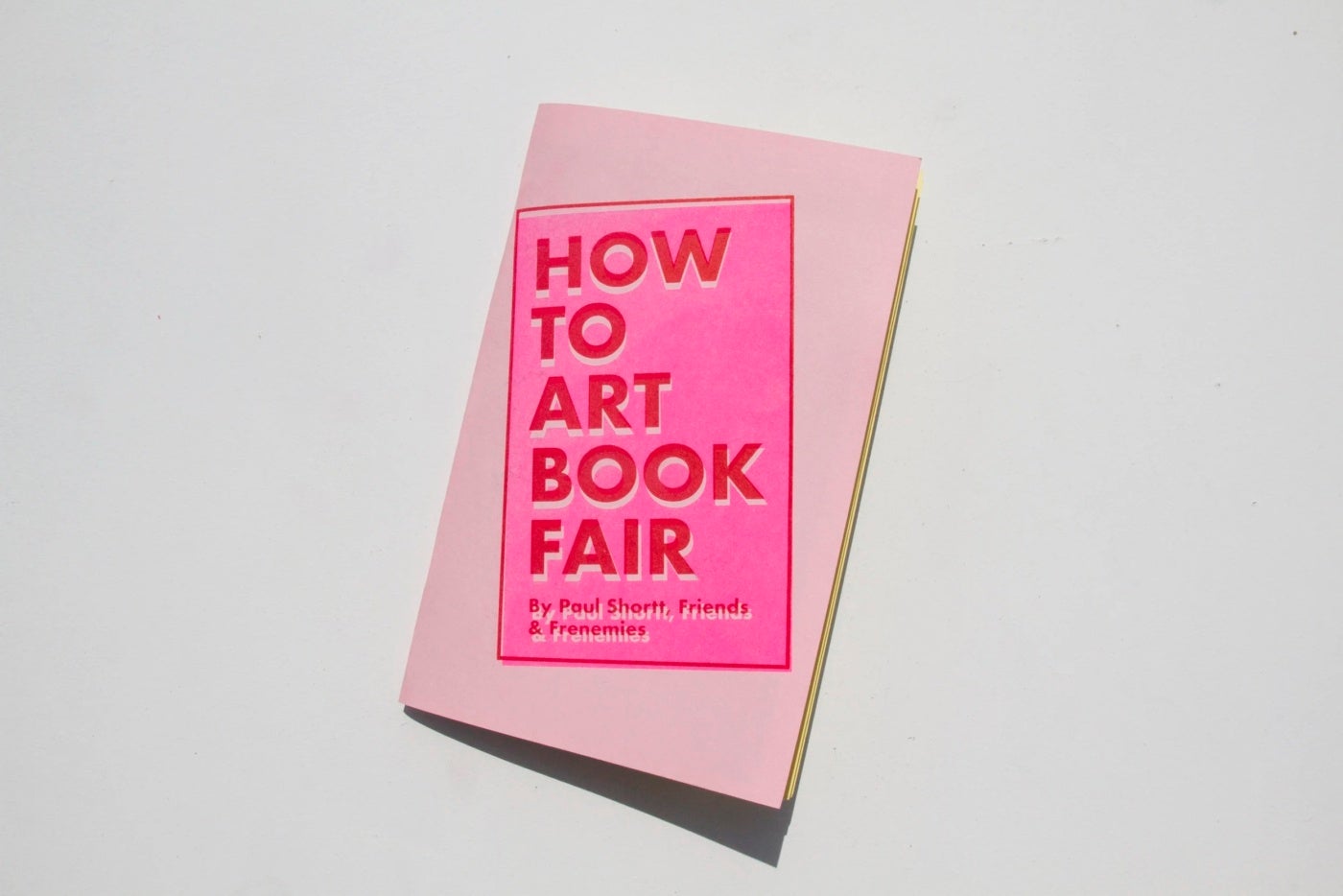
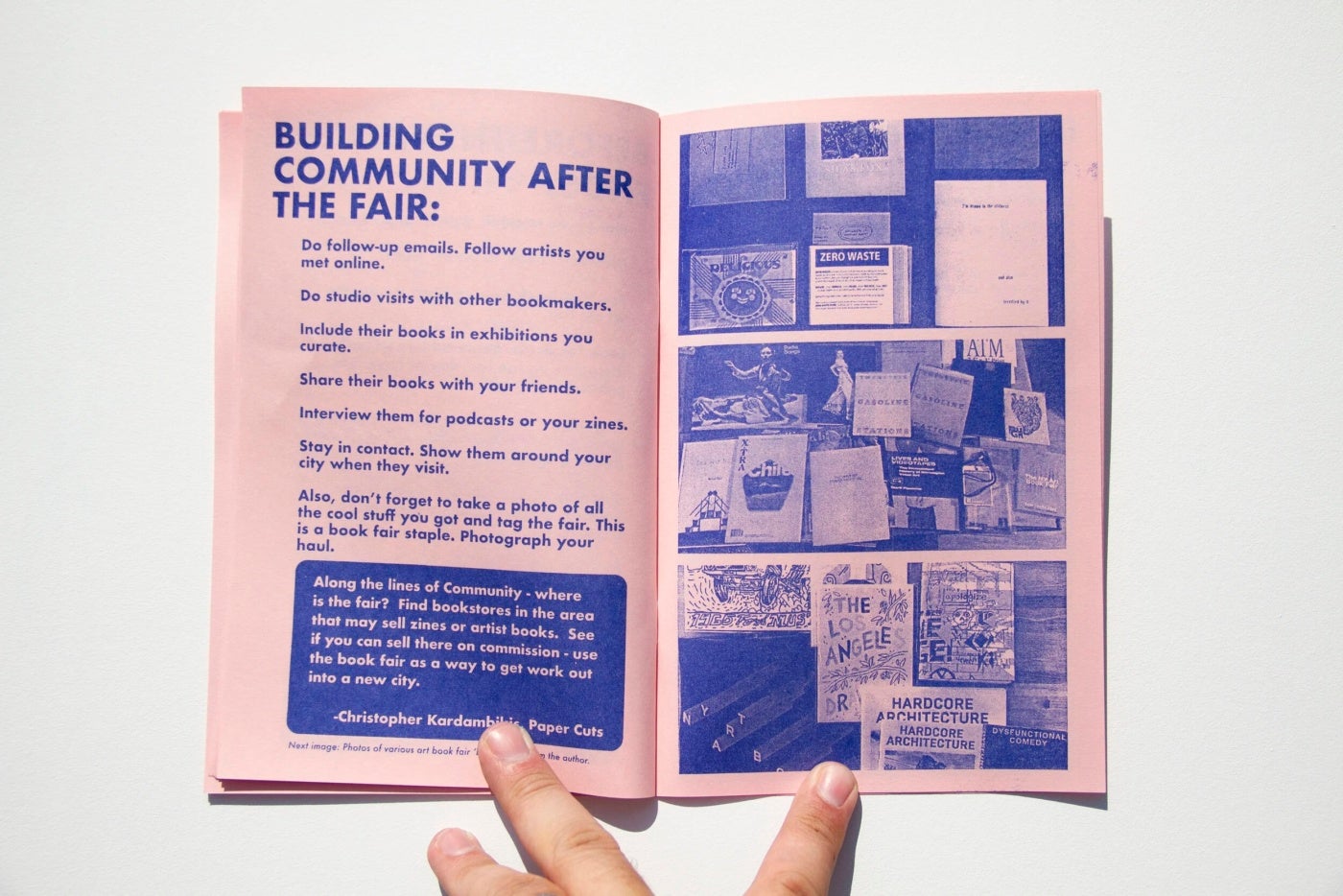
I have never made much money from my books and have almost always earned more from prints. That’s one reason I started designing my books as prints. My books started out at $5 to $10 and now sell for an average of $20 to $50. Along with the price increases, I’ve raised the quality of my books.
The covers are typically the most expensive part, which is why I’ve increased the quantity I print—transitioning from 100 to about 200 to 500. Larger runs help bring the unit cost down but require more storage. Rising paper costs are another factor in producing bigger quantities, since I can get discounts by buying in bulk or printing larger runs of covers to use later.
None of these prices include labor—creating, producing, or selling the books. Time is actually the biggest expense. Even when I sell a book for $30, I’m never fully compensated for the time it takes to produce it. But most book artists don’t start out making books for money. They do it because they have an idea they want to explore through this format.
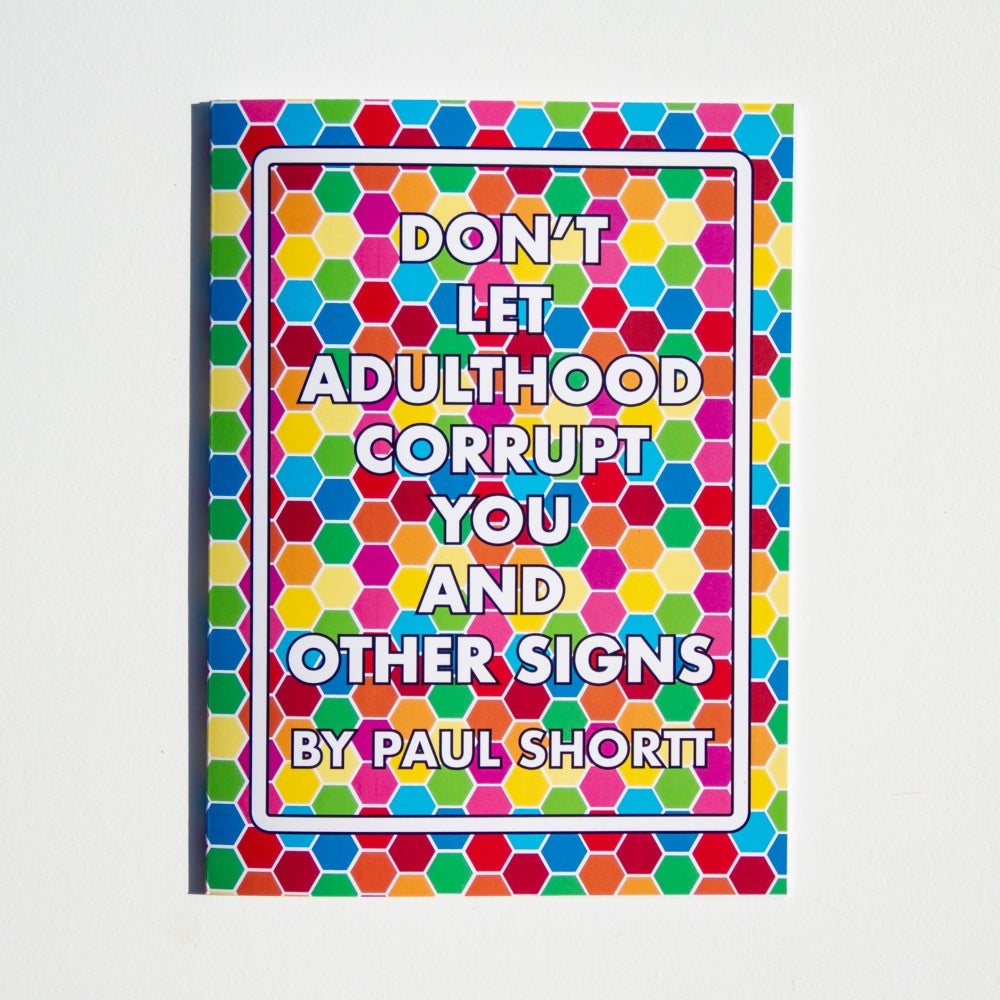
Collecting community
It might seem counterintuitive, but living two hours away from any major city is a big factor in the sustainability of my practice. I live and work in Gainesville, FL, where housing is still expensive but far less than in larger cities. There are tradeoffs: I’m cut off from most art funding, awards, commercial galleries, and institutional clout. That means I export most of the art I make: When I do an art book or zine fair, I’m hoping not only to sell books but also to trade with other artists, connect with new stores to stock my work, and build relationships with galleries.
As my art practice grew, the books became artworks in themselves.
Florida has a vibrant art book and zine community. There is PRINT ST. PETE in St. Petersburg, FL, run by Kaitlin Crockett; Miami Paper & Printing Museum (formerly IS Projects) in Miami, run by Ingrid Schindall; Dale Zine in Miami, run by Lillian Banderas and Steve Saiz; and EXILE Books in Miami, run by Amanda Keeley.
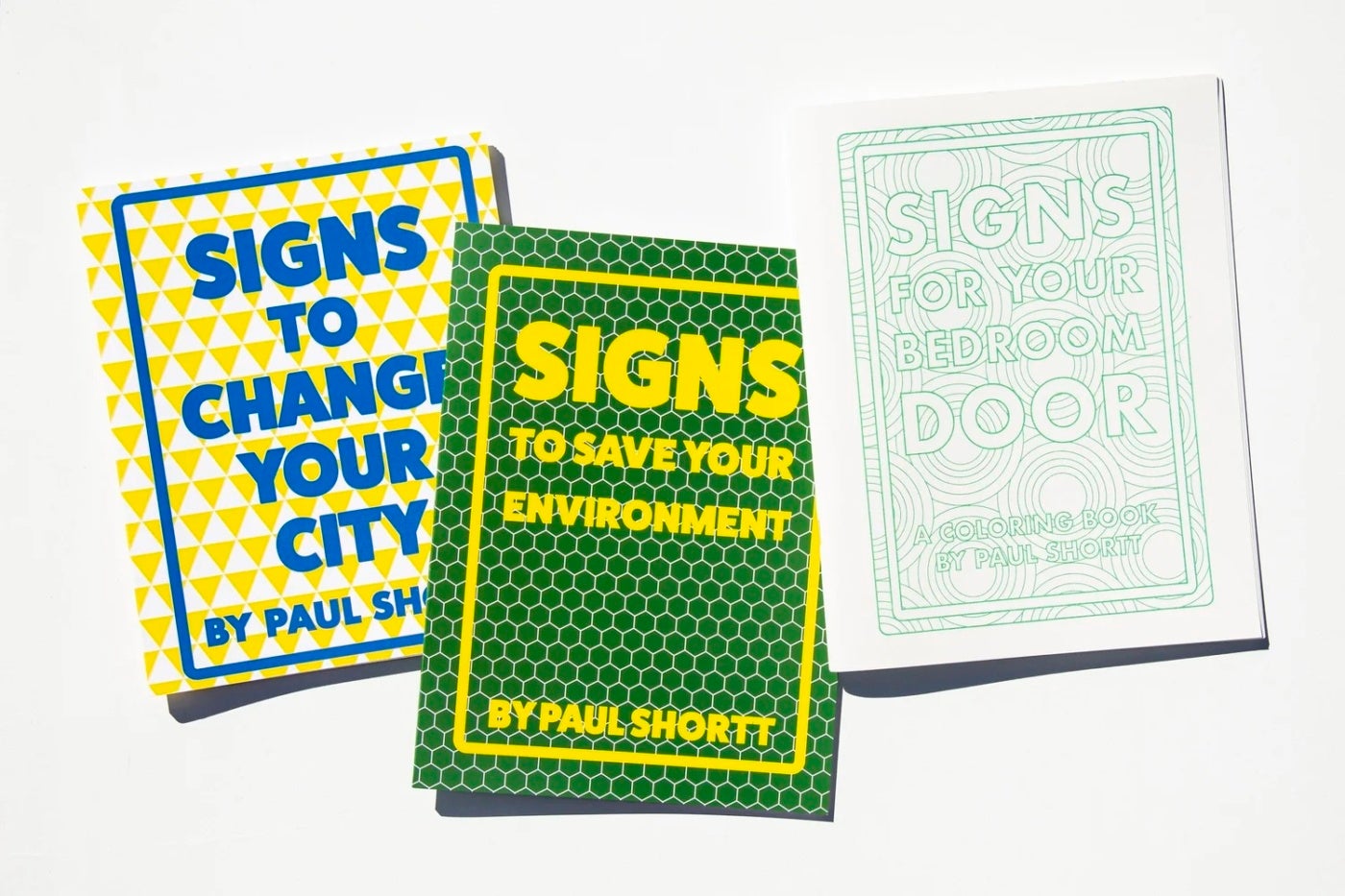
There is also a zine fair in nearly every big city in the state, including Jacksonville, Tallahassee, Orlando, Fort Lauderdale, St. Petersburg, and Miami. However, recent cuts to state funding have had a major impact on these and other spaces, causing closures and event cancellations.
After many years of making artist books and participating in more than fifty art book and zine fairs, I created the only available English language guide for this community to date: How to Art Book Fair (Third Edition, 2023). The book began as a simple zine that I’ve expanded every few years, with advice from many other book artists on how to apply, participate, sell, and build community at an art book fair. The book is printed on bubble-gum pink paper, a cheery color that reflects my enthusiasm for the work.
I’m excited for Burnaway’s first art book fair in Atlanta. For those new to tabling, here are a few excerpts from my guide to help you prepare.
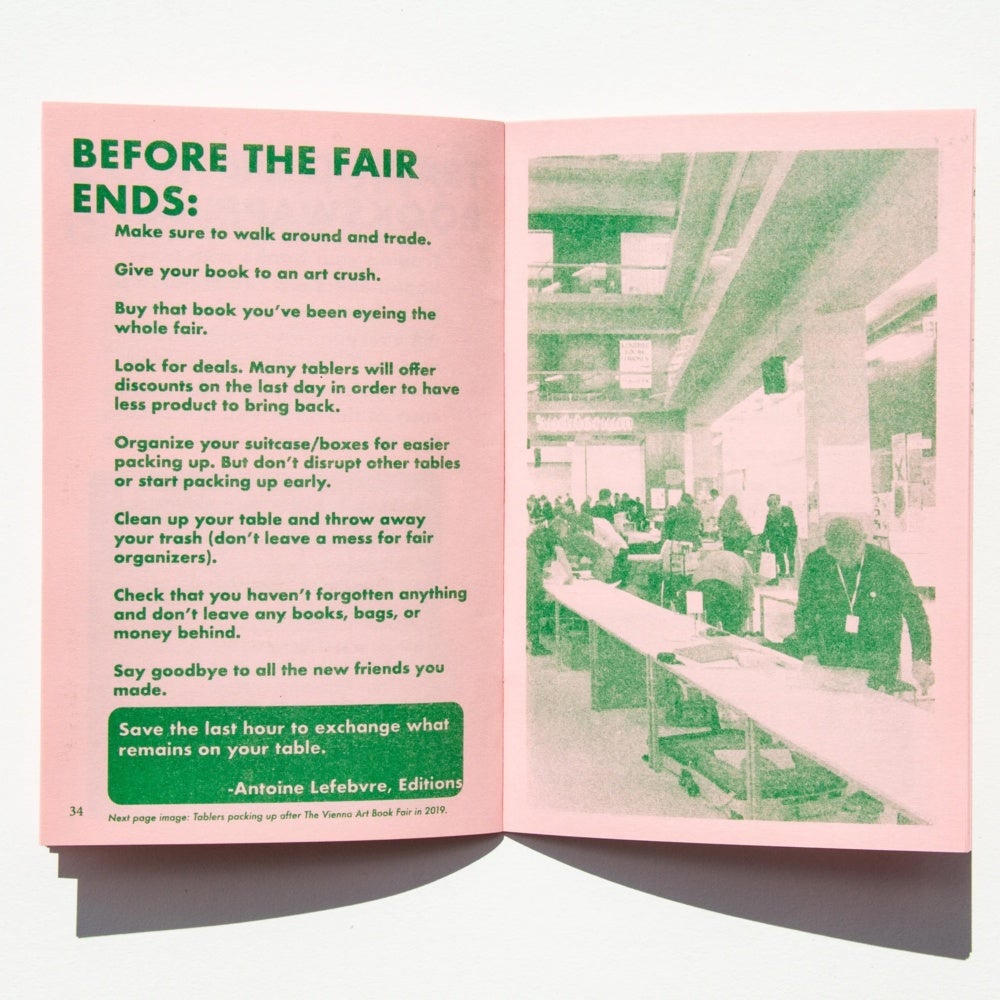
How to art book fair
Planning
- Once accepted, promptly pay your table fee to secure your spot.
- Make a checklist of everything you are going to need and what books to bring.
- Don’t bring too much product. Books are heavy so travel light.
- Pack your books smartly using bubble wrap, cardboard, etc.
- A checked bag or carry on may be cheaper than shipping books, but it’s really nice having your books at your table when you arrive.
- Keep an 80% book to 20% swag ratio.
- Bring your own tablecloth or have one printed and plan a cool table layout.
- Have eye-catching bags for purchases or totes for sale.
- Print business cards (and bring a bunch). Tape the last one to your table so people can photograph it.
- Bring or design your own book stands.
- Promote being at the fair ahead of time online. Learn the hashtag, follow other vendors online.
- Book fair organizers put a lot of time and effort into planning, so if you get accepted make sure to show up.
- If something comes up and you can’t make it, offer your table fee to sponsor another artist.
Basic Advice
- What kind of fair is this? Art book fair? Zine fair? Print fair? Know your audience.
- Say “hi” to everyone who walks by your table. Make them make eye contact. Chat. Ask what they do. Trade business cards. Swap Instagrams. Become friends.
- Take multiple forms of payment. Have at least $150 in $1, $5, $10, and $20 available. Purchase a Square chip reader, use Venmo, Paypal, etc. (whichever company comes close to your ethics).
- Have business cards. I always tell the people who say they’ll “be back” to grab my business card (because they usually don’t return, but they may look you up online).
- Take lots of pictures. Have people take pictures of you with your camera.
- Don’t just look at your phone.
- Bring food/snacks. I typically bring a case of sparkling water (in a cooler bag to keep it cool).
- Have a special giveaway (something unique that people will want to keep).
- Be patient, it’s not just about sales.
- Be prepared to be bored.
Selling
- Have a pitch or talking point for every book (don’t worry, you can figure it out as you go along).
- Put the book in people’s hands.
- Invite them to pick it up. I always say, “Even if it looks precious, it isn’t.” Unless it is?
- Talk to people, make them feel comfortable. Sometimes they are buying what your art represents as much as the book itself.
- Have prices listed or don’t. I prefer telling people my prices and chatting.
- Have a printed paper copy of your Venmo, Paypal etc. handles and/or QR codes.
- Don’t be pushy. Find the sweet spot of when to keep talking and when to keep quiet and just let them look at the book.
- Acknowledge people looking at your table. Sometimes just a smile and a “let me know if you have any questions” can go a long way.
- It’s not just about selling, but conversations. Hopefully those conversations will lead to other opportunities and friendships.
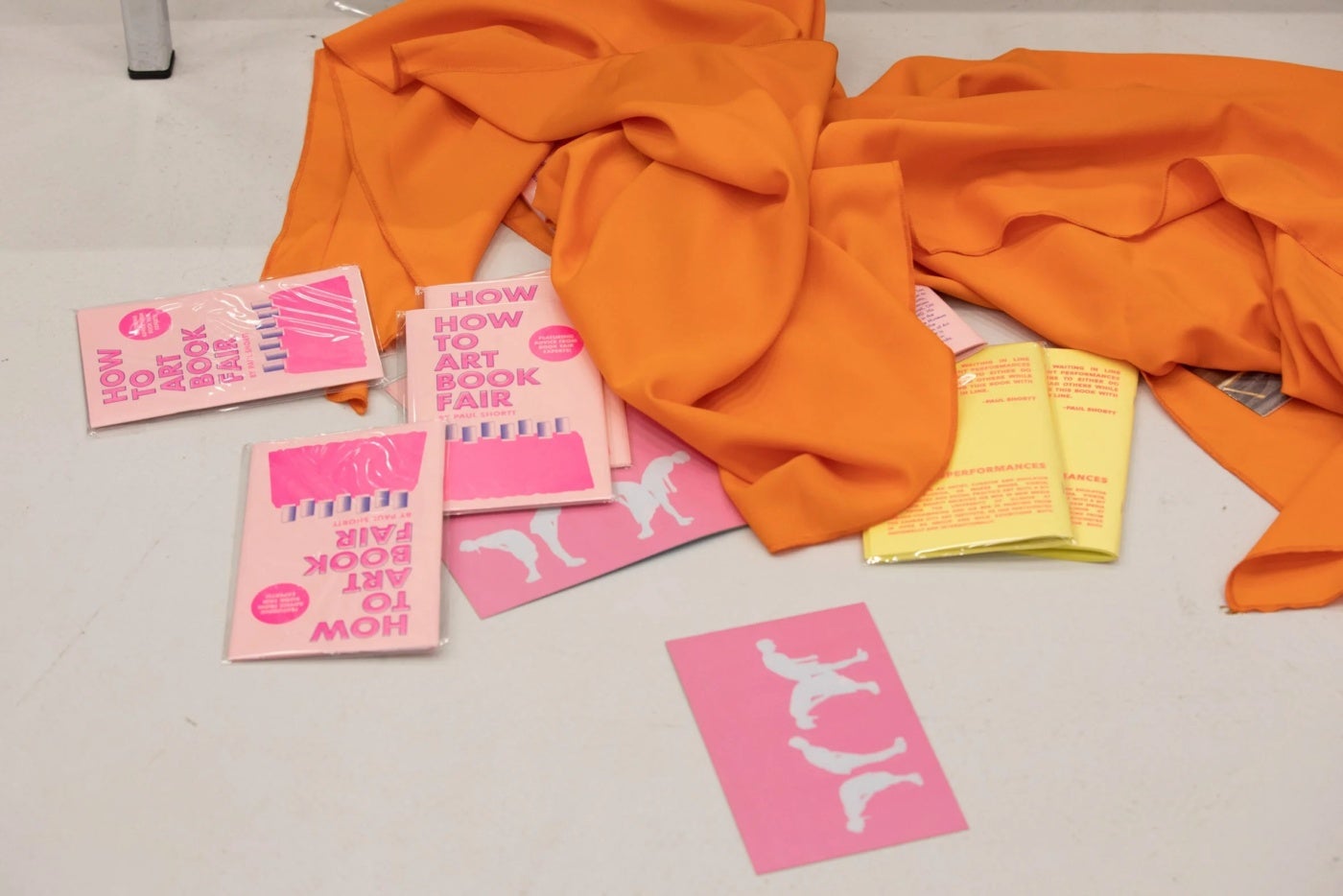
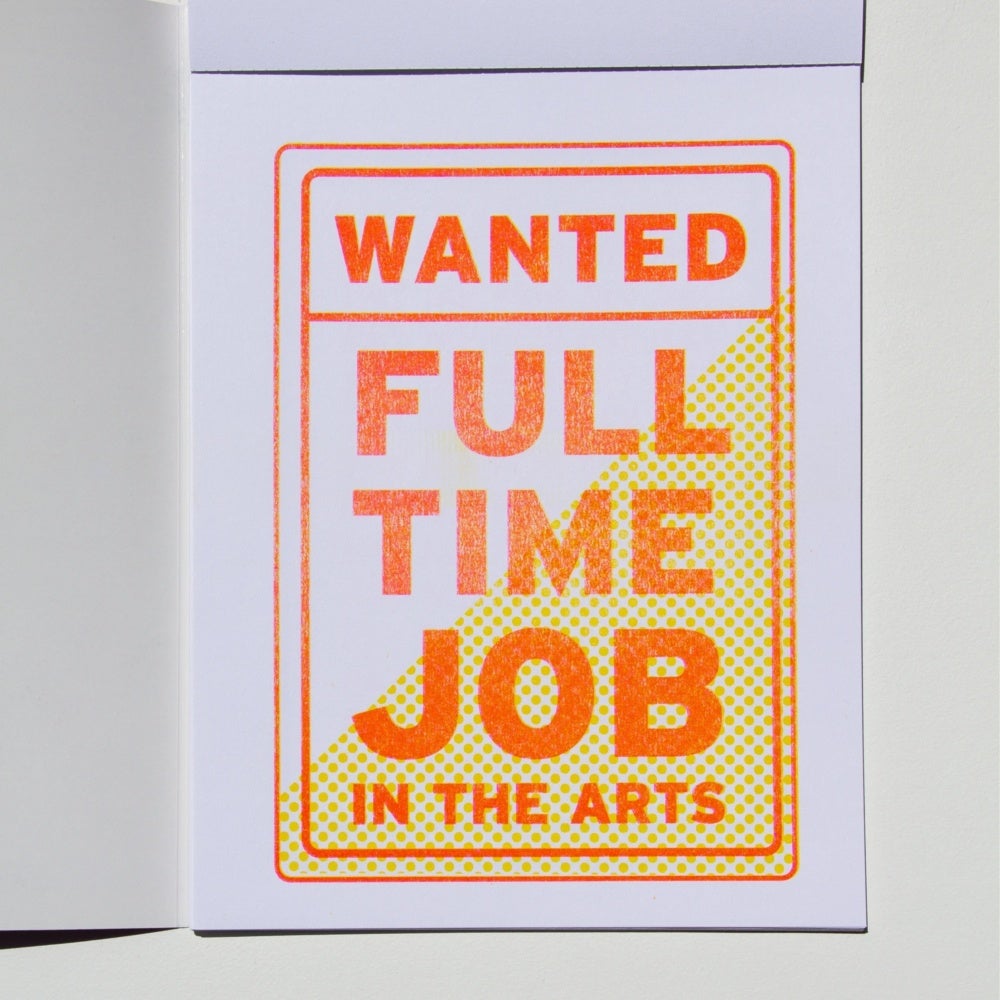
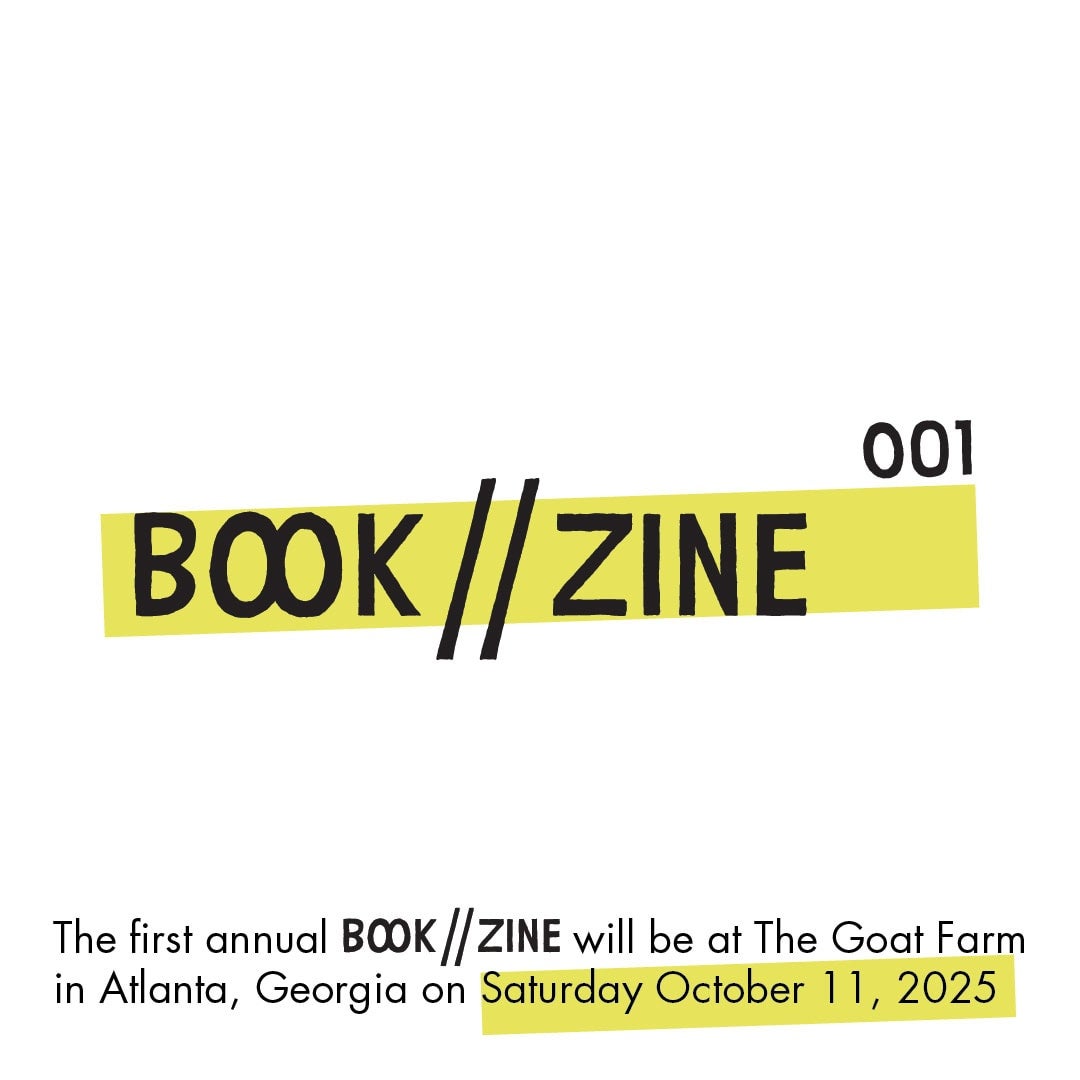
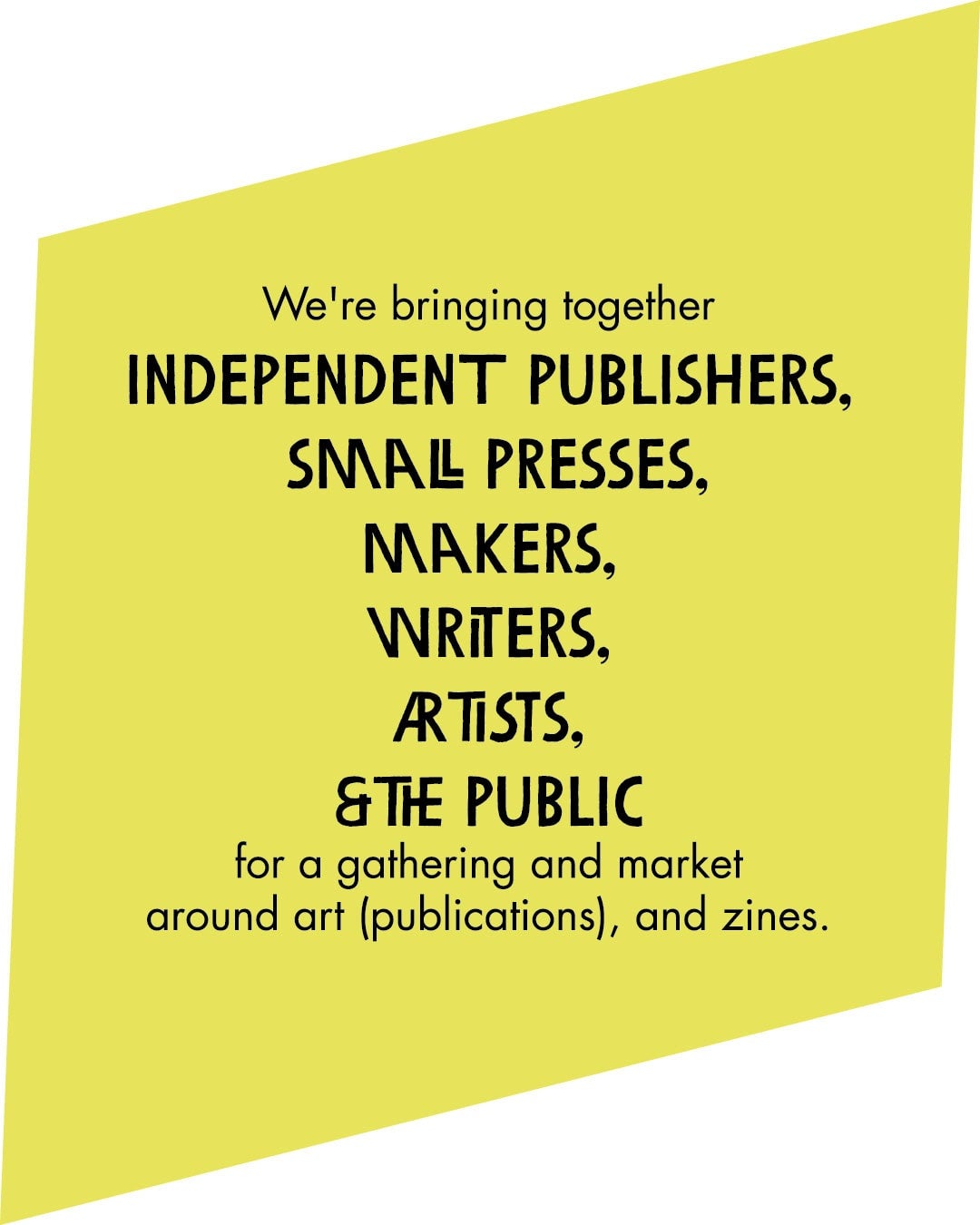
Book//Zine, Burnaway’s first annual art book and zine fair, will be held at The Goat Farm in Atlanta, Georgia on Saturday, October 11, 2025 from 11AM-5PM. We’re bringing together independent publishers, small presses, makers, writers, artists, and the public.
RSVP below to learn more!

